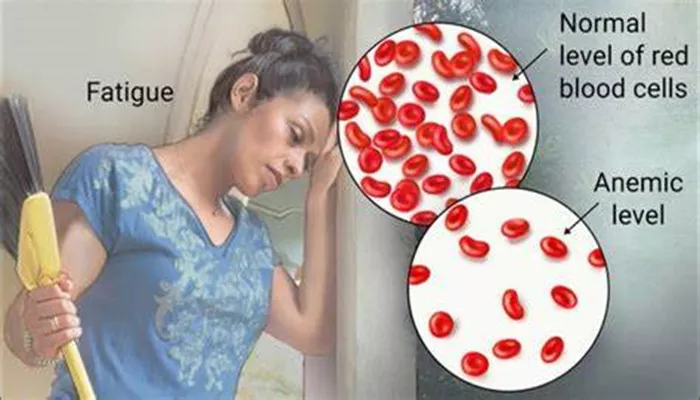Anemia and hypotension are two medical conditions that are often interconnected. While each condition can exist independently, they frequently occur together, leading to a complex interplay of symptoms and health challenges.
Understanding why anemia causes hypotension requires a deep dive into the mechanisms of both conditions and how they affect the body’s physiology. This article aims to elucidate the relationship between anemia and hypotension, examining the underlying causes, the physiological impact, and the clinical implications.
What Is Anemia?
Anemia is a condition characterized by a deficiency of red blood cells or hemoglobin, the protein in red blood cells that carries oxygen. This deficiency results in reduced oxygen delivery to the body’s tissues, which can cause a range of symptoms, including fatigue, weakness, shortness of breath, and pallor. Anemia can be caused by various factors, including nutritional deficiencies, chronic diseases, genetic disorders, and blood loss.
Types of Anemia
Iron-Deficiency Anemia: Caused by a lack of iron, which is necessary for hemoglobin production.
Vitamin B12 and Folate Deficiency Anemia: Resulting from inadequate intake or absorption of these essential vitamins.
Hemolytic Anemia: Where red blood cells are destroyed faster than they can be produced.
Aplastic Anemia: A rare condition where the bone marrow fails to produce enough red blood cells.
Sickle Cell Anemia: A genetic disorder causing abnormally shaped red blood cells that can obstruct blood flow.
SEE ALSO: Why Is My Blood Pressure Low When I Wake Up?
What Is Hypotension?
Hypotension, or low blood pressure, occurs when the force of blood against the artery walls is too low. While some individuals naturally have lower blood pressure without adverse effects, hypotension can cause symptoms such as dizziness, fainting, blurred vision, nausea, fatigue, and lack of concentration. Severe hypotension can be life-threatening if it results in shock, where the body’s organs do not receive adequate blood flow.
Types of Hypotension
Orthostatic Hypotension: A sudden drop in blood pressure upon standing up.
Postprandial Hypotension: A drop in blood pressure after eating.
Neurally Mediated Hypotension: Low blood pressure caused by a miscommunication between the heart and brain.
Severe Hypotension (Shock): A critical condition requiring immediate medical attention.
The Physiological Link Between Anemia And Hypotension
Reduced Oxygen Carrying Capacity
The primary role of red blood cells is to transport oxygen from the lungs to the rest of the body. Hemoglobin within these cells binds to oxygen and facilitates its delivery to tissues. In anemia, the reduced number of red blood cells or decreased hemoglobin levels lead to inadequate oxygen supply. This hypoxic state triggers compensatory mechanisms to maintain oxygen delivery, one of which is the dilation of blood vessels (vasodilation) to increase blood flow. However, vasodilation can also lower blood pressure, contributing to hypotension.
Decreased Blood Volume
In certain types of anemia, particularly those caused by blood loss (e.g., from gastrointestinal bleeding, heavy menstrual periods, or trauma), there is a direct reduction in blood volume. Blood volume is a critical determinant of blood pressure; when blood volume decreases, so does blood pressure. This relationship is especially evident in acute blood loss anemia, where hypotension can be a significant and immediate concern.
Cardiac Output and Stroke Volume
Cardiac output, the amount of blood the heart pumps per minute, is determined by stroke volume (the amount of blood ejected with each heartbeat) and heart rate. Anemia can lead to a decreased stroke volume because there is less blood available to be pumped. To compensate, the heart rate may increase, but this compensatory mechanism is often insufficient to maintain normal blood pressure, leading to hypotension.
Autonomic Nervous System Response
The autonomic nervous system (ANS) plays a crucial role in regulating blood pressure. In response to anemia-induced hypoxia, the ANS triggers a series of reactions aimed at maintaining oxygen delivery to vital organs. These include increasing heart rate (tachycardia) and redirecting blood flow to essential organs. However, chronic anemia can lead to ANS dysfunction, where these compensatory mechanisms become inadequate, resulting in persistent low blood pressure.
Clinical Manifestations of Anemia-Induced Hypotension
Symptoms
The combination of anemia and hypotension can lead to a complex set of symptoms that may include:
Dizziness and Lightheadedness: Due to reduced cerebral perfusion.
Fatigue and Weakness: Resulting from both decreased oxygen delivery and hypotension.
Pallor: Caused by reduced red blood cell count.
Shortness of Breath: Due to hypoxia and decreased blood oxygen levels.
Chest Pain: Particularly in severe cases where the heart struggles to receive enough oxygen.
Fainting (Syncope): Especially in cases of orthostatic hypotension.
Diagnosis
Diagnosing anemia and hypotension involves a combination of medical history, physical examination, and laboratory tests.
Blood tests can reveal low hemoglobin levels, reduced red blood cell count, and other markers of anemia. Blood pressure measurements, taken both lying down and standing up, can help diagnose hypotension and its specific type.
Management And Treatment
Treating Anemia
Vitamin B12 and Folate Supplementation: Necessary for deficiencies in these vitamins.
Erythropoiesis-Stimulating Agents: Used in certain chronic conditions to stimulate red blood cell production.
Blood Transfusions: In severe cases, transfusions can quickly restore red blood cell count and volume.
Treating Hypotension
Fluids: Increasing fluid intake can help boost blood volume and pressure.
Medications: Such as fludrocortisone and midodrine, which can increase blood pressure.
Diet and Lifestyle Changes: Including increased salt intake, wearing compression stockings, and avoiding prolonged standing.
Conclusion
Anemia and hypotension are interconnected conditions that can significantly impact an individual’s health and quality of life. Understanding the physiological mechanisms linking these conditions is essential for effective diagnosis and treatment. By addressing the underlying causes of anemia and implementing appropriate treatments for both anemia and hypotension, healthcare providers can improve patient outcomes and alleviate the complex symptoms associated with these conditions.


